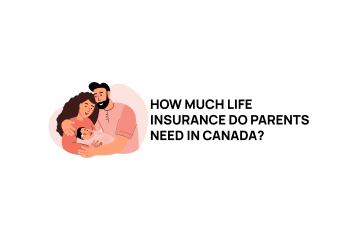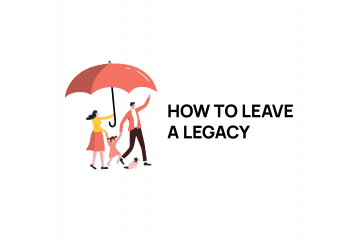Life insurance premium increases are never a welcome surprise. If you aren’t sure why your rates have changed, it’s easy to feel blindsided.
The good news is that you can avoid the stress of unforeseen rate changes. In fact, by paying attention to a few key details, you can actually get ahead of the life insurance game and save money in the long run.
Life Insurance pricing: Term vs. Whole life policies
The amount you pay in premiums will depend on what kind of life insurance policy you have.
Term life insurance will give you coverage for a set period of time (usually between 5 and 30 years). When you purchase a policy, you may have the option to establish a level premium. This means your premiums will remain the same for the length of your policy.
Whole life insurance provides you with indefinite coverage from the day you purchase a policy until the day you pass away, whenever that may be. Unlike term life insurance, whole life premiums are not level. Every year, you will be subject to premium increases.
Let’s have a look at how these prices came to be…
How are life insurance premiums calculated?
Both term and whole life insurance policies consider a similar range of factors when determining their prices:
- Age: The older we are, the higher the premium.
- Gender: Women typically pay lower life insurance premiums because they tend to live longer.
- Overall health: Those in good health will pay lower premiums.
- Occupation: Working in a hazardous environment can hike up your premiums.
Can my lifestyle affect my premiums?
Absolutely. Your lifestyle plays an important role in determining how much you pay for your life insurance.
As we mentioned above, if your working environment is high risk you will likely see an increase in premiums. The same goes for your hobbies. If you are a recreational skydiver or bungee jumper, you will see it reflected in your insurance prices.
Other aspects of your lifestyle can also impact your premiums. Most notably — smoking. Insurance providers take smoking very seriously and can as much as double their rates for a long-term smoker. Keep in mind, this can include marijuana use, e-cigarettes, cigars, and pipes.
The good news is that you will be rewarded for quitting. Some life insurance providers may even decrease your rates after just 12 months of stopping. However, most will require a longer commitment — usually about five years.
Why do premiums increase?
Now that we understand how premiums are initially calculated, let’s take a look at what makes them change over time.
Factors Within your control
Lifestyle choices and addressing addiction are two major elements within your control. By taking steps to improve your personal health, you can make the system work better for you.
You can also take control by staying on top of your life insurance policy and understanding when premium increases happen. More on this later…

Factors beyond your control
Long term health problems such as hypertension, diabetes, or epilepsy are examples of pre-existing conditions. Thankfully, individuals with pre-existing conditions can often manage their symptoms when given access to treatment and medication. Unfortunately, they will nonetheless be charged higher premiums.
The other major factor beyond your control is age. With every year that passes, you pose a slightly higher risk to your insurance provider. These increases get steeper the older you get.
If you are in your 40s for example, you may see an increase of about 5% per year. However, an older individual in their 60s may see increases of up to 12% from one year to the next.
These increases are only apparent to those with whole life insurance policies because term policies are often “level.”
This may leave you thinking that term life insurance is a better deal. You are right in some regards. Term life insurance does tend to be more affordable than whole life insurance. But rest assured, your age and any other factors are included in your premiums regardless.
You see, when an insurance provider calculates a level rate for a set term, they make sure to consider the increasing risk of your age, occupation, etc. Once they have calculated an estimated cost, they spread it over the whole length of the term, rather than increase your premiums every year.
Here’s an example of the principle in action:
Let’s consider a 42 year old woman who has signed up for a $500 000 life insurance policy.
She decides to buy a whole life insurance policy starting with a 5% premium increase each year. In year 1, she pays $14.50 per month. In year 2, her rate would go up to $15.20.
If she decided to get a term life insurance policy with a level premium, the insurer would calculate the increase and split it into two identical payments. So, this same woman would pay $14.85 per month for both years.
Of course, actual life insurance prices are much more complicated to calculate, but most insurance companies use this basic foundation.

Can I avoid a life insurance premium increase?
There are several ways to stay ahead of your premiums and find the cheapest way of continuing your coverage. With just a little forward planning, you can avoid unnecessary premium hikes and keep your coverage as affordable as possible.
Knowing when your premiums is scheduled to increase
As we’ve mentioned previously, life insurance premiums don’t increase randomly. Depending on the type of policy you have, there are different milestones to be aware of.
- Term Life insurance: Although you may pay level premiums during the length of your policy, cost will go up significantly when it comes time to renew it. You can find yourself paying anywhere from 2 to 5 times the amount you initially budgeted for.
- Whole Life Insurance: As you now know, age will have the biggest impact on your whole life policy. Keep an eye out for any steep rate increases according to particular ages (these are most apparent at the 50, 60, or 70 year mark).
Get a free quote
Do a little digging
Once you know when to expect a premium increase, you can start comparing different insurance plans. There are plenty of ways to do this:
- Contact life insurance providers directly: This way, you will get in depth information on any given company’s products.
- Contact an independent broker: Because they aren’t attached to a specific insurance company, independent brokers will have a great picture of the overall market.
- Use online resources: As well as company websites, there are several excellent life insurance comparison services. If you already know what you need from your policy, this is a quick and easy way to find the best rates.
Over the course of your research, you will quickly find out whether the rates you’re paying are competitively priced.
Planning a switch
If you find that there is another policy out there that better suits your needs, plan your switch ahead of time.
If you have a term life insurance policy, plan to switch before the renewal date. If you have a whole life insurance policy, you can schedule a switch to avoid the annual rate increase.
So there we have it!
Remember, never hesitate to contact us for more information about premium pricing or switching your life insurance policy — we are always happy to help.




